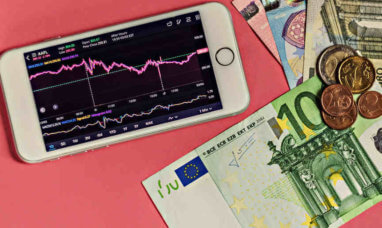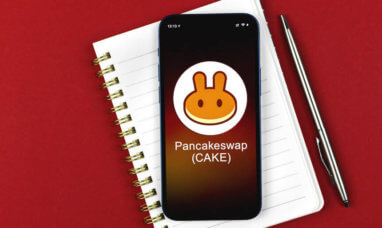Have you been looking to get into NFT but have no idea what it is? Or maybe you do know, but you haven’t been able to figure out which is the best NFT marketplace to get started on?
Whatever be the case, this post is for you.
In this guide, you will get to know what Non-Fungible Tokens – NFT for short – are all about. What’s more, you will also get to learn the different types of NFT marketplaces, how to buy and sell NFTs, and lots more.
What Are NFTs?
Non-fungible Tokens are basically digital assets – often in cryptographic form – that are used to store the value of tangible objects like a piece of art, music, play-to-earn games, etc.
Confusing? Well, let’s break it down a little bit.
When you say something is fungible, it means it can be exchanged without any loss in value. A good example is fiat money. If you had, say, a $10 bill, you could exchange it for two $5 bills and still have the value of your money intact.
Now, the opposite of fungible is non-fungible. Thus, NFTs are non-exchangeable digital tokens used to represent the ownership of a unique physical or virtual item.
They are somewhat similar to cryptocurrencies, only that they can’t be interchanged. However, they can be bought or sold, but only on an NFT marketplace. You can find resources for free NFT learnings.
How to Use NFT Marketplaces
As you might have guessed, NFT marketplaces are digital stores where you can display, mint, buy, and sell tokenized digital art, music, and any other NFT of value.
If you have ever bought or sold items on Shopify, eBay, or Amazon, then getting the hang of the NFT marketplace shouldn’t be much of a problem.
To get up and running on these marketplaces, you need to have a few things in place. They are as follows:
-
-
- A user account – Just like Amazon, you need to open an account to be able to trade on these marketplaces. Thankfully, you can usually create one fairly easily.
- A crypto wallet – NFT marketplaces mostly support cryptocurrency – Ethereum happens to be the most popular. To this end, you need to get yourself a crypto wallet. Keep in mind that whatever crypto wallet you go for should be compatible with the NFT you are looking to purchase. That means if to purchase an NFT on Ethereum blockchain, Monolith or MetaMask will suffice.
- Some coins in your wallet – If your wallet isn’t funded, you won’t be able to mint or purchase an NFT.
-
NFT Blockchain Options
As mentioned earlier, you need crypto coins to mint or trade an NFT. While Ethereum is ostensibly the most popular, there are quite a number of blockchain options that you could try.
They are as follows
-
-
- Solana
- Cardona
- Bitcoin
- Dogecoin
- Flow
- WAX
- Tezos
- Cosmos
- BNB
-
And lots more.
To purchase Ethereum, you can use Metamask. For Solana coins, you can get them from Binance.
Connecting Metamask to Binance Smart Chain
To connect Metamask to your Binance smart chain, first head over to the download page, pick your OS, and then install as directed.
After the installation, set the installed Metamask up. Then, create your wallet. Once your wallet is ready, you are ready to go.
How Do These Marketplaces Work?
Like every other online platform, the very first step to using an NFT marketplace is signing up for an account. The signup process is usually similar across all marketplaces.
Typically, you would be asked to create an account with Google or your email. Once you are done with that, you will usually be asked to link your crypto wallet. To do so, you’ll only need to provide your wallet’s password.
With your account all set up, the next step is creating/minting an NFT.
Minting an NFT
NFT marketplaces like Open Sea and Mintable allow you to create NFT with just the click of a button.
To do so, you will need to fund your crypto wallet with Ethereum coins. However, you don’t need to break the bank to get started, needing as little as $50 worth of ethers.
Do keep in mind that most NFT platforms charge a minting fee – technically known as a gas fee.
Buying an NFT
If you would rather buy than mint an NFT, that too is easy. Just head over to your preferred marketplace, find an NFT that you like, and purchase it. In some cases, you might have to make an offer to the owner. If the offer is accepted, then it’s all yours. Just remember that there are crypto taxes when purchasing NFT.
Auctioning is another alternative you should consider when looking to purchase an NFT.
Selling an NFT
When it comes to selling an NFT, you have two major options: buy from a vendor and sell, or sell the ones that you’ve minted. Either way, selling an NFT isn’t as easy and straightforward as buying one, as there are quite a number of procedures involved.
For beginners in NFT, the first step is uploading your digitized art onto the marketplace of your choice, and then setting a price to it. The next step is to verify the ownership of the uploaded item. The process varies across platforms. Once it’s been verified that you own the digitized art, you’re ready to start selling.
Types of NFT Marketplaces
Based on the niche you’re searching for you could find an NFT music marketplace, a game marketplace, virtual real estate marketplaces, and so many more.
That said, here are the top 5 marketplaces to create and sell digitized, non-fungible assets.
1) Rarible
To trade on Rarible, you need to possess what are known as RARI tokens. They are often distributed on a weekly basis to registered users on the platform.
Movies, music, books, and video NFTs are all available on Rarible.
2) Open Sea
Undoubtedly one of the biggest NFT marketplaces on the internet, Open Sea, has a large collection of non-fungible pieces of artwork and music.
3) Foundation
If you are looking to make recurring income on your digitized works, Foundation is your best bet.
4) SuperRare
SuperRare was mostly built for buyers and sellers looking to trade a single-edition of a digitized art.
5) Nifty Gateway
Nifty Gateway is the place to consider if you are looking to buy art from popular and established artists.
Featured Image: Megapixl








